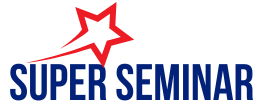Nonprofits face unique challenges in their mission to create positive change, and technology can be a game-changer. Software as a Service (SaaS) offers these organizations powerful tools to streamline operations, enhance communication, and optimize fundraising efforts. By leveraging cloud-based solutions, nonprofits can access resources that were once only available to larger organizations.
With the right SaaS applications, nonprofits can manage donor relationships, track volunteer efforts, and analyze data—all from a user-friendly platform. This not only boosts efficiency but also empowers teams to focus on what really matters: their mission. As the nonprofit sector continues to evolve, embracing SaaS can help organizations thrive in an increasingly digital world.
Table of Contents
ToggleOverview of SaaS for Nonprofits
SaaS for nonprofits offers a comprehensive solution to enhance operational efficiency. SaaS platforms provide various applications that help streamline daily functions, reduce costs, and improve overall effectiveness. They enable organizations to access tools for communication, project management, fundraising, and donor management without the burden of extensive infrastructure.
SaaS applications allow nonprofits to:
- Manage donor relationships: Utilize CRM (Customer Relationship Management) tools to track interactions, contributions, and preferences, fostering stronger engagement.
- Coordinate volunteer activities: Leverage platforms designed for scheduling, tracking hours, and communicating with volunteers, which simplifies coordination efforts.
- Analyze data: Employ data analytics tools to gauge campaign performance, measure impact, and make informed decisions based on actionable insights.
- Facilitate collaboration: Access cloud-based tools that enable team members to work together in real-time, regardless of their locations.
Implementing SaaS solutions can result in significant time and cost savings for nonprofits. These applications often operate on a subscription basis, making them affordable for smaller organizations. The ability to scale services to match growth ensures long-term sustainability and flexibility in addressing evolving needs.
Nonprofits can benefit from the accessibility of SaaS, with many platforms offering user-friendly interfaces and extensive support resources. By modernizing operations through SaaS, nonprofits can concentrate on their missions, ultimately driving more impactful community changes.
Benefits of SaaS for Nonprofits

SaaS solutions provide numerous advantages tailored specifically for nonprofits, enhancing efficiency and enabling organizations to focus on their core missions. Below are key benefits of SaaS applications that can transform nonprofit operations.
Cost-Effectiveness
SaaS platforms significantly reduce operational costs for nonprofits. With subscription-based pricing models, organizations pay only for what they use. This approach eliminates the need for large upfront investments in software licenses, hardware, and ongoing maintenance. Nonprofits can access enterprise-level tools without the financial burden, allowing them to allocate more resources toward programs and initiatives. Examples of cost-effective SaaS tools include donor management systems and project management software, which streamline processes while minimizing expenses.
Scalability and Flexibility
SaaS solutions offer scalability that aligns with the dynamic nature of nonprofit organizations. As a nonprofit grows, it can easily adjust its subscription and expand access to additional features or users without disrupting existing operations. This flexibility supports shifting needs, such as increased donor engagement or expanded volunteer management. Many SaaS platforms integrate seamlessly with other tools, ensuring that nonprofits can adapt their technology stack as their missions evolve. This adaptability enhances overall operational agility, allowing organizations to respond promptly to changing circumstances.
Popular SaaS Solutions for Nonprofits
Nonprofits can leverage a variety of SaaS solutions to enhance their operations and achieve their missions. Below are some popular categories of SaaS applications relevant to their unique needs.
Fundraising Platforms
Fundraising platforms streamline the donation process, making it easier for nonprofits to reach their financial goals. Solutions like Kickstarter, GoFundMe, and Classy allow organizations to create customized fundraising campaigns, integrate donation forms on their websites, and track contributions in real time. These platforms often provide tools for social media integration and email marketing, enabling nonprofits to engage with potential donors effectively.
Donor Management Systems
Donor management systems help nonprofits cultivate and manage relationships with their supporters. Tools such as Blackbaud, DonorPerfect, and Bloomerang offer features for tracking donor interactions, managing contact information, and generating detailed reports on donation patterns. These systems enhance communication with donors, ensuring that organizations can tailor their engagement strategies to create lasting relationships and optimize fundraising efforts.
Volunteer Management Tools
Volunteer management tools assist nonprofits in recruiting, scheduling, and managing volunteers more effectively. Applications like VolunteerLocal, SignUpGenius, and Better Impact enable organizations to post volunteer opportunities, track hours served, and communicate with volunteers easily. These tools help nonprofits maximize volunteer contributions, leading to enhanced operational efficiency and a stronger community impact.
Implementation Considerations
Implementing SaaS solutions in nonprofits requires careful planning. Organizations must assess their current systems and identify requirements to better serve their missions.
Integration with Existing Systems
Integrating new SaaS applications with existing systems ensures seamless operations. Nonprofits must evaluate compatibility with current software, such as accounting and fundraising tools. Successful integration enhances data sharing and reduces redundancy. Organizations should utilize APIs or middleware solutions to facilitate integration. Additionally, consider potential disruptions during the transition and plan accordingly to minimize downtime. A comprehensive assessment of stakeholder needs can further streamline this process.
Training and Support
Training and ongoing support are vital for maximizing the benefits of SaaS adoption. Nonprofits should provide staff with adequate training to ensure proper usage and familiarity with the new platform. Organizations can benefit from hosting workshops or utilizing online training resources provided by SaaS vendors. Continuous support, including access to help desks or user communities, fosters a culture of learning and troubleshooting. Enabling user feedback can also guide improvements and enhance overall satisfaction with the software.
Embracing SaaS solutions can transform how nonprofits operate in today’s digital age. By leveraging these powerful tools, organizations can enhance efficiency and focus on their core missions. The flexibility and cost-effectiveness of SaaS platforms empower nonprofits to adapt quickly to changing needs while maximizing their impact.
As nonprofits continue to navigate challenges in their pursuit of positive change, adopting SaaS applications offers a pathway to streamline operations and foster stronger relationships with donors and volunteers. With the right planning and support, these organizations can unlock the full potential of technology, driving meaningful community engagement and achieving their goals more effectively.




